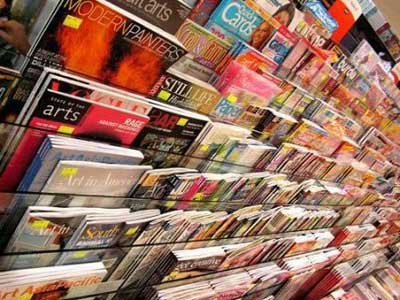Things You Need to Consider When Printing a Magazine
by Jeremy Thompson Web MarketerMagazines work both as an informer and a promoter of your products. Magazines have been transformed many times since first invented. Since the ’90s, it was assumed that television and computers would replace print publications while the rise of the internet would be the final nail in the coffin. Currently, nearly $44 billion USD is being spent on digital content production and distribution. Despite all this, brands still opt for print media advertising when they want to engage clients because no amount of technology can substitute the physical presence of a printed magazine.

Choice of Publication Printing Company
The printing process may seem like the easiest part, as it is the final step before publishing, but it’s an important task. Creating the perfect magazine requires you to pay attention to the printing process along with creative elements like writing and artwork. A lot of detailed analysis and planning goes into successful magazine printing. The printers usually have to receive, process and store page files from various resources on the request of the magazine publishers. You need a printer who has worked with enough publishers to understand your requirements. Unless you are publishing a very simple magazine, with no ads or mailed copies, it’s better to choose a publication printing company that specializes in magazine and catalogue printing.
Specifications of a Magazine Printing Project
You need to pay attention to details like the trim line, live area, crop marks and bleed area to accurately creating the print file.
• Trim line is the final representation of the printed material size. You need to place each piece on a different page because the file is created following the proper trim line. The standard measurements for the trim size are 8.25 inches x 10.25 inches.
• The information and images are placed in the live area. Make sure that they don’t get too close to the trim as it might get cut off or turn out to be unreadable. For the live area, the size should be 7.75 inches x 9.75 inches.
• The bleed area provides enough space for your printer to move the paper around and avoid any unattractive white borders on your final piece. You should use at least 0.125 inches as the minimum bleed.
• Crop marks are where the paper is cut. It is better to let a professional place the crop marks, so no information gets cut out.
Images with High Resolution
A high-quality magazine needs high-resolution images. The final effect of your image determines the resolution of the printout. This is because your computer displays images at PPI or pixels per inch, while the printers lay down images at DPI or dots per inch. DPI and PPI are often interchangeably used but are not the same. You can get a printout of an image on a 300dpi printer at 72ppi, 100ppi, or 300ppi. You can change the PPI setting of an image, but the DPI setting on a printer is fixed. The standard resolution for a magazine printing is 300 pixels/inch (PPI). You can print at PPI also, but you would require a much higher PPI than the actual image to produce a great quality print. This is because your printer needs more pixels for a high-quality output than your monitor does.
The format of the files is very important too as all formats like GIF, BMP and PNG are not able to produce the desired outcome. Images with spot colours, layers and transparency work best with Photoshop’s PDF, PSD, JPG AND TIFF formats.
Font Selection
You need fonts in your magazine print file that can be embedded in PDF files to retain the chosen typography and layout in the printed piece. Proper kerning makes the fonts proportional and enhances the appearance and legibility of the fonts.
Choice of Colours
There’s a difference between CMYK (Cyan, Magenta, Yellow and Black) and RGB (Red, Green, Blue) colours. CMYK is the better choice if you are using a lot of colours, but Pantone is good for a more vibrant effect with brighter colours.
Always check the magazine printing project file before you send it for final printing. You can find publishing printing facilities in Toronto that use the latest of technologies to give you what you want. They can provide you with high-quality printed magazines consistently and quickly.
Sponsor Ads
Created on Jan 21st 2019 03:36. Viewed 397 times.
Comments
No comment, be the first to comment.



